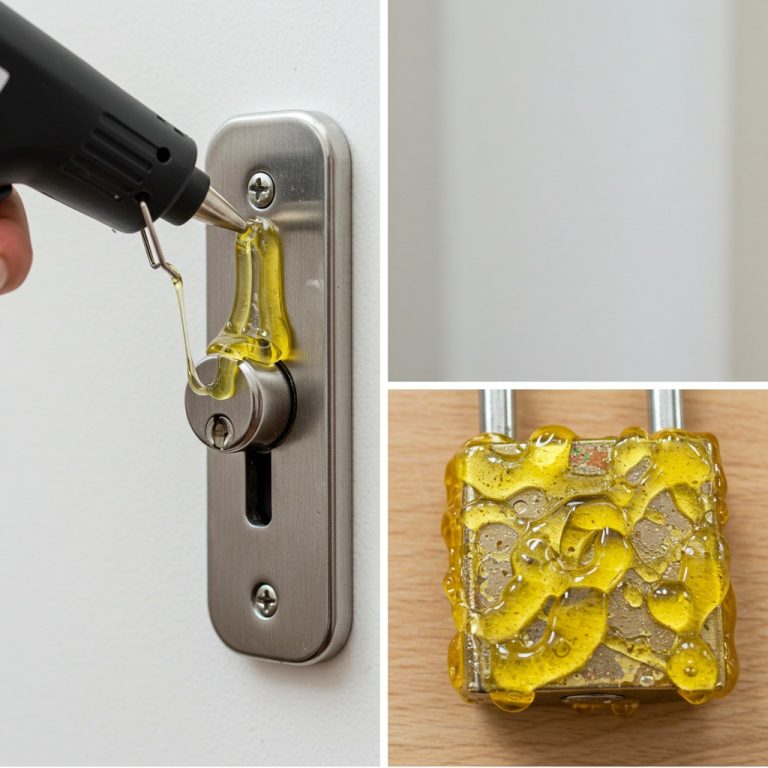ADVERTISEMENT
Hot glue sticks
Step-by-Step Instructions:
- Prepare the Area: Before applying the hot glue, make sure the lock is clean and dry. Use a clean cloth to wipe off any dirt, dust, or moisture around the lock area. This will ensure that the hot glue adheres properly.
- Heat the Glue Gun: Plug in your hot glue gun and let it heat up. This usually takes about 5 minutes.
- Apply the Glue: Once the glue gun is ready, apply a small bead of glue around the keyhole or the areas where the lock is difficult to turn. Be cautious — a little goes a long way! You don’t want to clog the keyhole or create a mess.
- Smooth the Glue: If you’re using the glue to cover any cracks or gaps, use a small brush to smooth out the glue and make sure it’s evenly applied. Be careful not to block the keyhole entirely.
- Let the Glue Dry: Allow the glue to cool and dry completely before using the lock. This will ensure the glue forms a protective barrier and prevents further damage.
- Test the Lock: After the glue has dried, insert your key and test the lock. You should notice that the lock turns more easily and the key moves with less resistance.
⚠️ Precautions and Considerations
While hot glue can be a useful temporary solution, there are a few things to keep in mind:
- Temporary Fix: This method is not a permanent solution to all lock issues. If your lock is suffering from severe damage, rust, or wear and tear, you might need a more permanent repair or to replace the lock entirely.
- Use in Moderation: Hot glue should be applied sparingly. Over-application can cause the glue to seep into areas where it might interfere with the lock’s internal workings.
- Clean the Lock First: It’s essential to clean the lock before applying the glue. If dirt or debris is already inside the lock, hot glue might trap it inside, making the issue worse.
- Don’t Block the Keyhole: Be careful not to cover the keyhole entirely with glue, as it will make the lock impossible to use. Apply glue only to the outer areas, leaving the keyhole unobstructed.
🚪 Final Thoughts: A Simple Trick for a Common Problem
While it may sound like an unusual solution, applying a tube of hot glue to your lock can indeed save you from the inconvenience of a sticky, malfunctioning lock. It’s an easy, low-cost, and effective temporary fix to smooth out the operation of the lock, protect it from moisture, and keep dirt at bay.
However, if you find that your lock continues to give you trouble, it might be time to call a professional or consider a replacement. In the meantime, hot glue can certainly help provide some quick relief and buy you time until you get around to a more permanent fix.
Have you tried using hot glue on locks before? Let us know how it worked for you, or if you have any other helpful DIY tips for dealing with sticky locks!
Let me know if you’d like more tips on DIY home fixes! 😊
